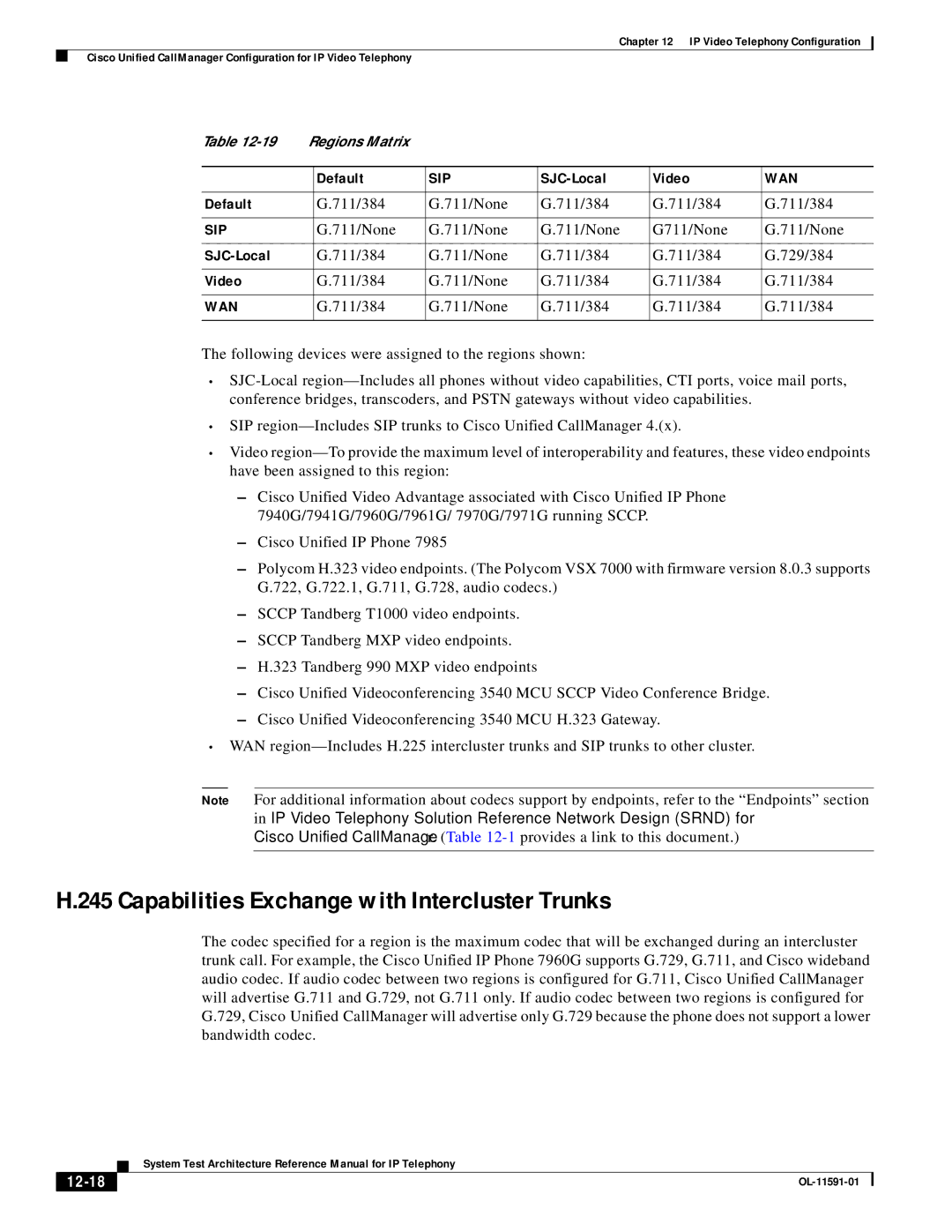
Chapter 12 IP Video Telephony Configuration
Cisco Unified CallManager Configuration for IP Video Telephony
Table | Regions Matrix |
|
|
|
| |
|
|
|
|
|
|
|
|
| Default | SIP | Video | WAN | |
|
|
|
|
|
|
|
Default |
| G.711/384 | G.711/None | G.711/384 | G.711/384 | G.711/384 |
|
|
|
|
|
|
|
SIP |
| G.711/None | G.711/None | G.711/None | G711/None | G.711/None |
|
|
|
|
|
|
|
| G.711/384 | G.711/None | G.711/384 | G.711/384 | G.729/384 | |
|
|
|
|
|
|
|
Video |
| G.711/384 | G.711/None | G.711/384 | G.711/384 | G.711/384 |
|
|
|
|
|
|
|
WAN |
| G.711/384 | G.711/None | G.711/384 | G.711/384 | G.711/384 |
|
|
|
|
|
|
|
The following devices were assigned to the regions shown:
•
•SIP
•Video
–Cisco Unified Video Advantage associated with Cisco Unified IP Phone 7940G/7941G/7960G/7961G/ 7970G/7971G running SCCP.
–Cisco Unified IP Phone 7985
–Polycom H.323 video endpoints. (The Polycom VSX 7000 with firmware version 8.0.3 supports G.722, G.722.1, G.711, G.728, audio codecs.)
–SCCP Tandberg T1000 video endpoints.
–SCCP Tandberg MXP video endpoints.
–H.323 Tandberg 990 MXP video endpoints
–Cisco Unified Videoconferencing 3540 MCU SCCP Video Conference Bridge.
–Cisco Unified Videoconferencing 3540 MCU H.323 Gateway.
•WAN
Note For additional information about codecs support by endpoints, refer to the “Endpoints” section in IP Video Telephony Solution Reference Network Design (SRND) for
Cisco Unified CallManager. (Table
H.245 Capabilities Exchange with Intercluster Trunks
The codec specified for a region is the maximum codec that will be exchanged during an intercluster trunk call. For example, the Cisco Unified IP Phone 7960G supports G.729, G.711, and Cisco wideband audio codec. If audio codec between two regions is configured for G.711, Cisco Unified CallManager will advertise G.711 and G.729, not G.711 only. If audio codec between two regions is configured for G.729, Cisco Unified CallManager will advertise only G.729 because the phone does not support a lower bandwidth codec.
| System Test Architecture Reference Manual for IP Telephony |
|
